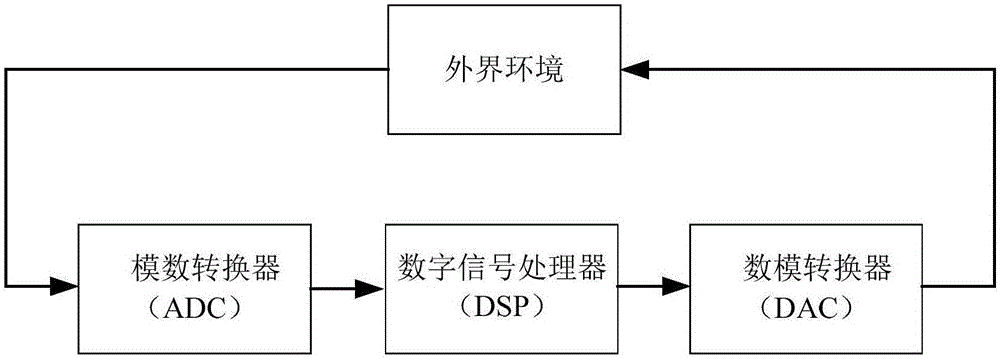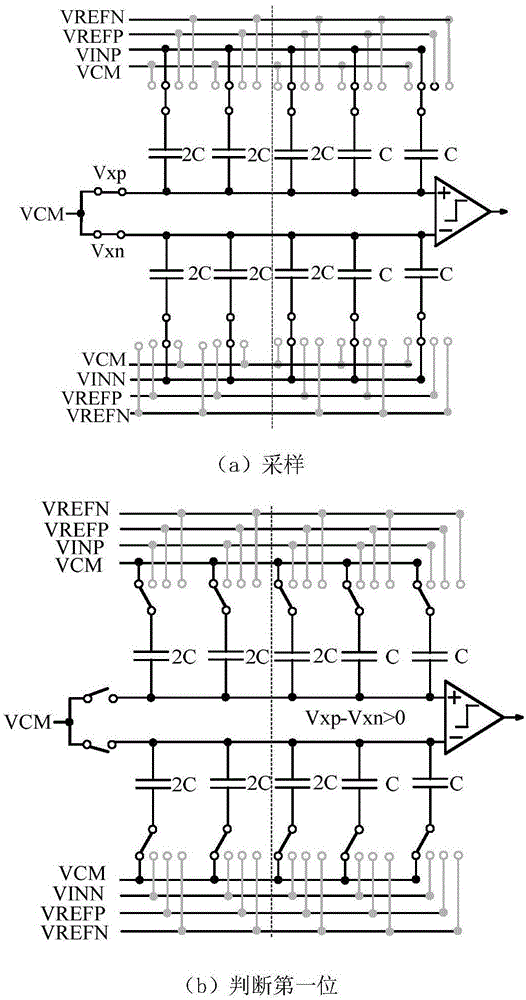Electric charge reallocation method for successive approximation analog-digital converter
An analog-to-digital converter and charge redistribution technology, applied in analog/digital conversion, code conversion, instruments, etc., can solve the problem of increasing layout design complexity of non-binary capacitor arrays, inability to track capacitors, and restricting the applicability of background correction algorithms, etc. problem, to achieve the effect of simple structure, small occupied chip area, and easy realization
- Summary
- Abstract
- Description
- Claims
- Application Information
AI Technical Summary
Problems solved by technology
Method used
Image
Examples
Embodiment Construction
[0019] The traditional charge redistribution N-bit SARADC consists of a binary capacitor array, assuming that the expression of each capacitor is as follows:
[0020] C i = 2 i-1 C 0 +δ i (i∈1,2,…N)(1)
[0021] where C i Indicates the i-th capacitance value of the binary capacitor array, δ i Indicates the error corresponding to the i-th capacitor, and the variance of the error is:
[0022] E [ δ 1 2 ] = σ 0 2 C 0 2 - - - ( 2 )
[0023] E [ δ i 2 ] = 2 i - 1 σ 0 2 C ...
PUM
 Login to View More
Login to View More Abstract
Description
Claims
Application Information
 Login to View More
Login to View More - R&D
- Intellectual Property
- Life Sciences
- Materials
- Tech Scout
- Unparalleled Data Quality
- Higher Quality Content
- 60% Fewer Hallucinations
Browse by: Latest US Patents, China's latest patents, Technical Efficacy Thesaurus, Application Domain, Technology Topic, Popular Technical Reports.
© 2025 PatSnap. All rights reserved.Legal|Privacy policy|Modern Slavery Act Transparency Statement|Sitemap|About US| Contact US: help@patsnap.com



